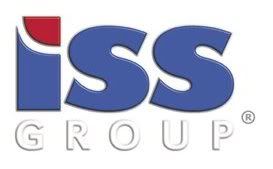It's about Return On Customer...Stupid!
It's about Return On Customer...Stupid!
There are three emerging trends affecting CRM. In no particular order, they are business process management (BPM), the move to make hosted systems more flexible to modify and integrate, and an emerging drive to focus on the return on each customer relationship, rather than the focus on individual transactions.
We've all heard the experts explain to us that capturing a new customer is much more expensive than making an additional sale to an existing customer. We all know and acknowledge this logic, but have done little from a systems-and-methodology standpoint to take advantage of this insight.
Peppers and Rogers recently published "Return on Customer; Creating Maximum Value from Your Scarcest Resource." They've introduced ideas and metrics that should make it easier for the rest of us to not only get it, but also change the way to set up our business, and work with customers to achieve better results for all.
Of course, being better about how we deal with customers is not a quick or simple fix. Today's customer is simply wealthier, better educated, and has less time than at any time in history. And they have been educated to believe in their uniqueness. That's why dealing with customers can be so challenging, and why business processes must be flexible.
The only certainty about our business processes is that at some point in the near future they will have to change to handle the needs of our customers. And it is that potential for change that drives our attention on integration and customization, with things like Service Oriented Architecture (SOA), SOAP, and other advanced protocols. Lately organizations like NetSuite, Oracle, Salesforce.com, SAP, Siebel, Microsoft and others have announced or delivered products that begin to address the process issue in earnest and make integration and customization easier, faster, and less expensive. Microsoft Dynamics CRM is definately on that track with the new release of Version 3.0.
But there are many different ways to address these same standards. The big difference on this issue centers on how integration and new development are accomplished. Traditional approaches have been data-centric, the logic being that if we can describe the data model for everything that happens in a business, then we can build the screens and reports we need to run the business. But that does not take into the account the one real variable in business--the changing customer. In a world that increasingly focuses on process, especially processes that evolve, defining the metadata model begins to look like a Monty Python skit.
But the path to this customer centricity, and all of the good things that it implies for both our businesses and our customers goes directly through BPM (Business Process Modeling) and our ability to adapt our systems when customers change their minds. And while there may not be any "ultimate solution" to the issue currently available, we are beginning to ask some important questions about the customers and how we can better deal with them.
Microsoft is now working on an improved workflow and process modeling engine that will be made available soon, and will be able to extend the "orchestration" across the entire enterprise. And even today, much of this can be accomplished by combining Microsoft BizTalk with Microsoft Dynamics CRM without waiting for the next shoe to drop.
If you have any questions about this, or would like to see what can be done, drop me a line and we will explore it.
Bruce McIntyre


0 Comments:
Post a Comment
<< Home